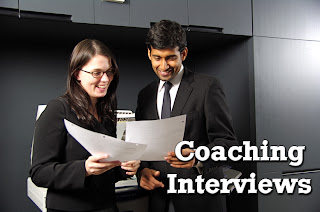A Few Resume Tips
A friend of mine asked me to take a look at their resume for
them. This friend has been working for
himself for over a decade, but has now decided to look for some different
opportunities. The tips I was going to
give him seem appropriate for a wider audience.
Your resume is one of the building blocks of your career and you will
want to be careful in its construction. Here
are some things that you want to keep an eye on when putting together a
resume. These are true whether you have
been self-employed for a decade, stuck on unemployment for a year, or a week
out of grad school.
Length
A good tip is to keep your resume to a length of one to two
pages. While there are some exceptions,
most Recruiters and Human Resources reps do not have enough time to read
through resumes longer than this. A good
rule is if you have less than 2 years of experience, a one page resume is
fine. If you have more than 2 years of
experience, add a second page if you feel it is appropriate. Remember to think of your resume as a summary
of your work experience. It is not
intended to highlight everything, just a few key responsibilities from each
job.
Gaps
Another tip is to never leave gaps of more than a few months
unexplained on your resume. If you have
a gap, you should consider finding a way to address it. Ideas include a long-term volunteer position
if you have one, classes you may have taken towards a certificate or degree, or
simply laying out your responsibilities while you were unemployed. Another option is to use a different resume
format. While the most common resume
format is one that is in chronological order, you can also choose to have a functional
resume that highlights skills and achievements.
Timeframe
The typical resume should not include anything from 10 or 15
years ago. Now keep in mind, this is a
gross generalization. If you had an
internship working for the President at the White House, that is impressive
enough that you would want to put it on your resume. However, most of us have high school jobs and
some college jobs that have no place on a resume. I will use myself as an example. I spent a summer stocking shelves at a retail
store when I was in high school. I spent
also some time delivering newspapers as a kid.
For the most part I did a good job at both and was complimented by my
managers. However, I do not put that on
my resume. It is up to you to determine
whether it is appropriate to be on there, but you may be wasting the HR person’s
time by putting a high school job on your resume.
Education
Having an education section of your resume is a great
idea. This is a way to put all of your
formal training in one place for a recruiter to see. If you only have a high school diploma or
GED, that is okay. Go ahead and add that
to your resume. If you have any college
degree, it is okay to drop your high school from your resume. If your education is non-traditional, such as
a military academy or an online certificate, try your best to formalize and
summarize it.
Formatting
Consistency is a key here.
You want to ensure that if you bullet one part of your resume, you
bullet it all. I might suggest having
two different versions of the same resume; one that is properly bulleted, lined
and paginated that can be used for printing, and one that is completely free of
formatting that can be easily read by resume screening software. If you are unclear of where to start with
your resume formatting, a Google search of the term “Resume Template” can find
you a number of good examples to start with.
Hopefully these tips are helpful for everyone out there. If you have any tips of your own, please add
a comment. If you just want to talk
about your job search experience, please feel free to add that too. If you want to talk about the kinds of
resumes that have come across your own desk, please tell us about it.
And remember all of
you Human Resources professionals: Be
Human... Be a Resource... Be a Resource
for Humans.
Disclaimer: The views expressed in this post are by the author Trevor
Stasik, and do not necessarily reflect the views of any employer or any other
organization. Please note, this information is based on my understanding and is
only to be used for informational and educational purposes. Do not take what I am writing as advice. Seek your own legal counsel and/or see a tax
accountant before making business or personal decisions. The author of this post makes no
representations as to the accuracy or completeness of any information on this
site or found by following any link on this site. The owner will not be liable
for any errors or omissions in this information nor for the availability of
this information. The owner will not be liable for any losses, injuries, or
damages from the display or use of this information.








